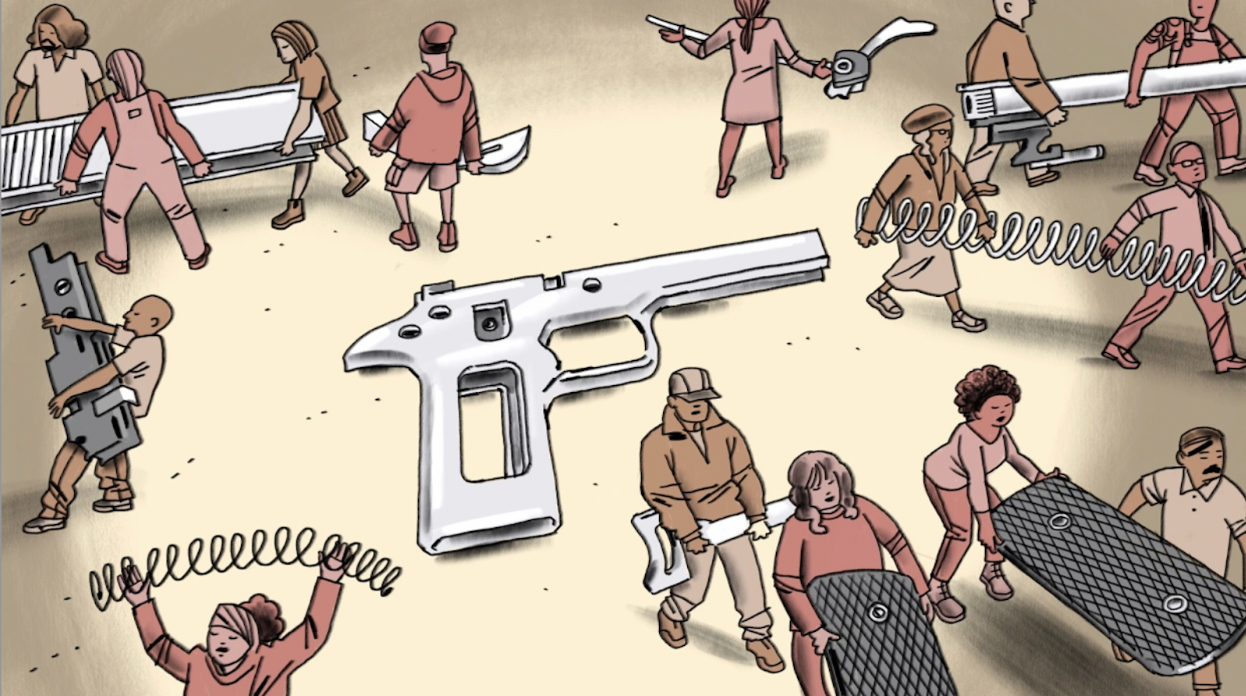Celebrations of Lunar New Year were disrupted by gun violence this year in the California communities of Monterey Park and Half Moon Bay. In the fifth mass killing of the month, the Star Ballroom Dance Studio, located in Monterey Park, was the target of a mass shooting by Huu Can Tran, age 72. Tran entered the dance studio on January 22 and proceeded to open fire on everyone inside, killing 10 people and injuring another 10 within five minutes (another victim died from their injuries later, finalizing the death count at 11). After fleeing the scene, Tran headed toward another dance studio, Lai Lai Ballroom & Studio, in the nearby neighborhood of Alhambra where he was fortunately blocked from entering by Brandon Tsay, the owner’s son. While police were unable to discern a definitive motive for Tran’s actions, they were able to piece together an understanding of his past. He was described by people in his life as distrustful, angry, and delusional. He often reported himself to the police as a victim of assorted crimes and claimed that dance instructors at Star and Lai Lai studios were jealous of him.
In the Half Moon Bay massacres, shooter Chunli Zhao, 66, was arrested for murdering seven people and injuring one. On Monday, January 23, he released fire on a mushroom farm where he lived and worked, killing four. Afterwards, he traveled to a trucking facility and killed another three. San Mateo County District Attorney Steve Wagstaffe revealed Zhao was motivated to commit the shooting because of a $100 repair bill for a forklift that his supervisor demanded he pay. Zhao also reported that he was bullied and worked long hours, but his complaints were never acknowledged.
The fight for gun control continues despite strong opposition from the National Rifle Association (NRA). But it is becoming increasingly apparent that, in addition to advocating for gun control legislation, we must more broadly consider gun violence through lenses of inequity. Consequently, activists must demand increased social resources to prevent tragedies like those in Monterey Park and Half Moon Bay
To better imagine what such social services should look like, it is important to identify the root causes of gun violence. The driving factors of committing gun violence depend on a complicated intersection of experiences and conditions. The American Psychological Association attributes gun violence to a combination of “individual, family, school, peer, community, and sociocultural risk factors” and how those factors interact over the course of a person’s life.
Gun violence is concentrated in impoverished areas that often also deal with “racial segregation, lower educational attainment, and high unemployment,” all issues linked to poorer mental health outcomes. Black and African American people living below the poverty line are twice as likely to report serious psychological distress than those living over the poverty level. This is especially concerning given that between 2015 and 2018, major depressive episodes among Black and African American populations in general increased from 9 percent to 10.3 percent for youth ages 12 to 17; 6.1 percent to 9.4 percent in young adults 18 to 25; and 5.7 percent to 6.3 percent in the 26 to 49 age range. Yet despite their greater need for mental health resources, poor neighborhoods lack the economic investment required to provide them.
Investing in social services within impoverished areas will lessen the inequalities that can trigger gun violence in the first place. But legislators also need to think about the unique challenges associated with providing social services in communities of color or low-income neighborhoods. Historically, minorities have not been treated well by the health industry. Moreover, a lack of representation among healthcare providers, coupled with issues in communication, and cultural stigma surrounding seeking care, may make it more difficult for services to operate in marginalized communities.
Multipronged interventions that utilize legislation and public health, public safety, community care, and medical care systems can reduce gun violence. This strategy should especially focus on a non-carceral state–targeting the root causes of an issue and implementing restorative justice initiatives as opposed to prioritizing punitive measures, which already have a harsh impact on poor and minority communities. For example, a non-carceral approach would prioritize investments in public health, which would entail greater messaging about safe storage of firearms, thus decreasing the probability of gun accidents. Similarly, promoting youth workforce development and creating employment opportunities can reduce youth involvement in violent crime by as much as 45 percent. Meanwhile, renovating housing, vacant buildings, and lots, and even adding greenery and improving air quality, can significantly aid in these efforts; creating more spaces for informal contact between neighbors, such as parks or community centers, is linked to a greater sense of safety for people in urban areas.
While exclusively attributing gun violence to mental health issues can be dangerous and misguided, it is nonetheless critical to recognize the role of mental health in these tragedies. Research does indicate that an increase in social services may be the key to mitigating some of the damage. The shooters of the Monterey Park and Half Moon Bay both displayed a need for such mental health and community care resources. Having support systems to depend on could potentially have prevented them from resorting to violence. Thus, it can be helpful and productive to consider social services we can provide to those whose lack otherwise increases their propensity for violence. Doing so is key to the long-term safety of communities.
